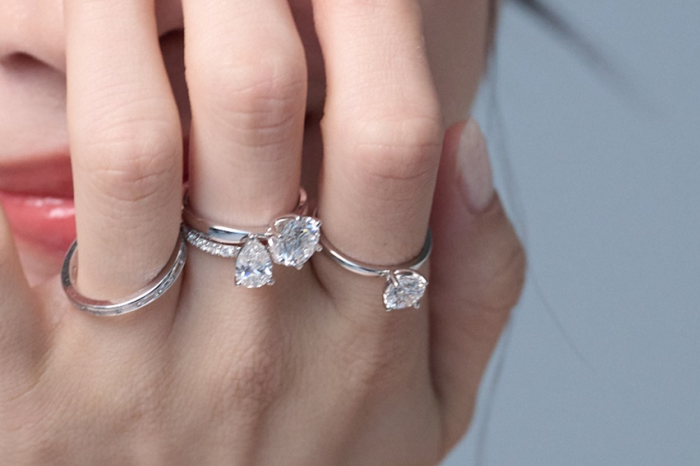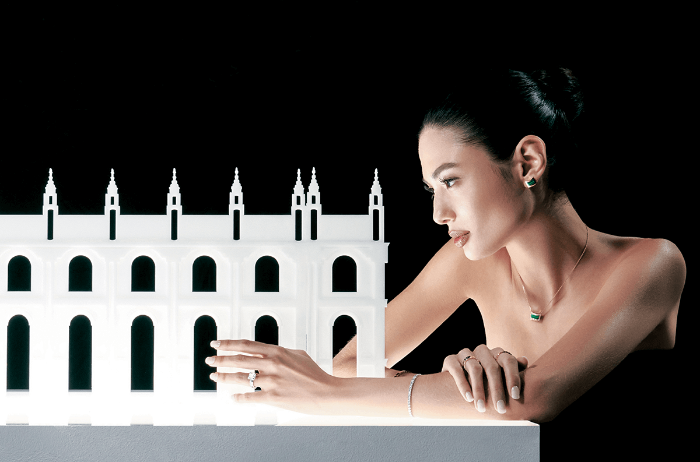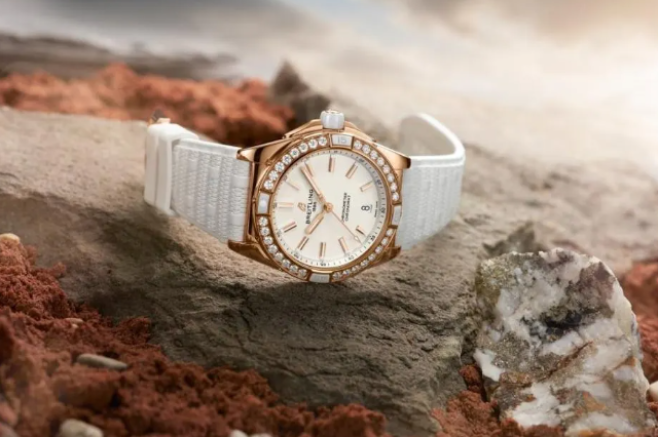Retail
Synthetic diamonds with ESG value lure Korean shoppers
Local brands see more customers opt for lab-grown diamonds given their sustainable production and ethical sourcing
By Sep 11, 2023 (Gmt+09:00)
3
Min read
Most Read
LG Chem to sell water filter business to Glenwood PE for $692 million


KT&G eyes overseas M&A after rejecting activist fund's offer


Kyobo Life poised to buy Japan’s SBI Group-owned savings bank


StockX in merger talks with Naver’s online reseller Kream


Meritz backs half of ex-manager’s $210 mn hedge fund



Lab-grown diamonds, cultured in laboratories wth advanced technologies, are garnering attention from South Korean consumers as they are produced more sustainably and at more reasonable prices than natural diamonds often criticized for contributing to air pollution and labor exploitation.
The Grace London, a lab-created jewelry brand run by Korea’s E-Land Group, saw 100 million won ($75,201) worth of its synthetic diamonds sold out within two hours at an invite-only event for VIP customers of Lotte Department Store in Dongtan, about 40 kilometers south of Seoul, during the last week of August.
It is the first time that a VIP event for jewelry at one of Korea’s three major department stores, Lotte, Hyundai and Shinsegae, has generated more than 100 million won worth of sales in such a short time, according to the brand.
Lloyd, E-Land’s affordable jewelry brand, started selling one-carat lab-grown diamond rings at 1 million won last month. The brand sold 1,000 rings within three weeks of the sales launch – thanks to their price tag at one one-fifth the average price of a natural diamond ring in Korea.
Korea marked the world’s eighth country to have started lab-created diamond production this year as local company KDT Diamond succeeded in synthesizing the gem materials. The world’s lab-grown diamond production leaders include India, China and the US.

MARKET SHARE GROWTH
Lab-created diamonds can be made from two processes, a high pressure process and another with high temperature (HPHT) and chemical vapor deposition (CVD). Through the former method, a diamond seed that contains carbon atoms is heated to 1,300-1,600 degrees Celsius with extremely high pressure for growth. The latter process is carried out in a vacuum chamber, where natural gases like hydrogen and methane are pumped in and broken down into carbon atoms that accumulate on the crystal and make a diamond.
The artificially generated jewelry is typically priced at 20% of its natural counterpart largely due to mass production – a tiny crystal mixture can be grown to one-carat diamond within several weeks.
Global market demand for lab-grown diamonds is on the rise, driven by younger customers who prioritize sustainability and ethical sourcing, according to India-based research firm Astute Analytica. It forecasts that the market will expand from $20.9 billion in 2022 to $52.5 billion by 2031 at a 10.8% compound annual growth rate.
The market share of lab-grown diamonds has been consistently growing after a sluggish start in 2016-2018, according to Edahn Golan Diamond Research & Data. It stood at 3% of combined diamond sales at US specialty jewelers, rose to 5% in 2021 and exceeded 7% as of June 2022, the research firm said.

LUXURY BRANDS EYEING SYNTHETIC GEMS
There are some 30 lab-grown diamond makers worldwide set to disrupt the overall diamond market. As synthetic diamonds gain popularity, global luxury brands are eyeing the launch of such jewelry products.
Diamond mining giant the De Beers Group launched its synthetic diamond brand Lightbox in 2018. Its one-carat lab-created diamond cost about $4,200 at the time, while an equivalent natural gem sold for $6,000. Handcrafted accessories brand Pandora announced in 2021 that it will stop selling mined gems and released lab-grown jewelry brand Pandora Brilliance in the same year.
Breitling introduced lab-grown diamonds in its new Super Chronomat Origins last year, saying the Swiss luxury watchmaker will phase out mined gems by the end of 2024. Its crosstown competitor TAG Heuer also used lab-created diamonds for its new Carrera Plasma released earlier this year.
Louis Vuitton Moët Hennessy (LVMH) invested $90 million in Israeli lab-grown diamond startup Lusix in July of last year as the French luxury fashion group eyes huge potential in the synthetic gem market.
Despite the growth in lab-created gem market, demand for mined diamonds from some high-end customers will remain steady, said Wolgok Jewelry Foundation Research Center Director Ohn Hyun-sung.
"As lab-grown diamonds increase their share in the mass market, more consumers find such gems affordable and the overall diamond market expands. But as there are still a lot of consumers who seek natural stones in luxury fashion brands, we expect demand for conventional, high-end jewelry to continue,” said Ohn.
Write to Ji-Yoon Yang at yang@hankyung.com
Jihyun Kim edited this article.
More to Read
-
 FashionTepid luxury sales widen gap between favorite and less-favored brands
FashionTepid luxury sales widen gap between favorite and less-favored brandsJul 17, 2023 (Gmt+09:00)
4 Min read -
 FashionGucci cedes throne to Chanel in Korean used luxury market
FashionGucci cedes throne to Chanel in Korean used luxury marketAug 29, 2023 (Gmt+09:00)
1 Min read -
 FashionKoreans maintain designer love with used items, 'quiet luxury'
FashionKoreans maintain designer love with used items, 'quiet luxury'Jul 18, 2023 (Gmt+09:00)
3 Min read -
 Travel & LeisureArt luxury hotel reopened at Paradise City in Incheon
Travel & LeisureArt luxury hotel reopened at Paradise City in IncheonJul 14, 2023 (Gmt+09:00)
1 Min read -
 E-commerceLuxury fashion platform Balaan faces thinning coffers amid mounting loss
E-commerceLuxury fashion platform Balaan faces thinning coffers amid mounting lossApr 14, 2023 (Gmt+09:00)
3 Min read
Comment 0
LOG IN


